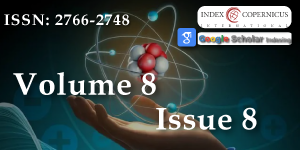Thermodynamic Gradient Cosmology – A Local Model for the Observed Expansion of the Universe (Second Edition)
Main Article Content
Abstract
The prevailing cosmological paradigm interprets the nearly linear redshift–distance relation of galaxies as evidence that the entire fabric of space has been expanding since an initial high-entropy event commonly referred to as the Big Bang. This paper advances an alternative view: the observed expansion is confined to the hot, energetically active domain that constitutes the observable universe, whereas remote, energy-poor regions beyond the photon horizon may remain static or contractive. The apparent Hubble flow is modeled as a consequence of local thermodynamic gradients. Zones of high temperature and energy density undergo metric dilation, while colder, nearly empty zones do not. This framework reinterprets cosmic expansion as a macroscopic thermodynamic process akin to heat diffusion, extended to astrophysical scales. It challenges the necessity of auxiliary constructs such as dark energy, the cosmological constant, or negative-mass antimatter, and outlines empirical signatures by which it can be tested. The universe, in this view, does not face an inevitable disintegration or "heat death"; instead, it self-regulates through expanding and contracting regions in pursuit of large-scale thermodynamic equilibrium.
Article Details
Copyright (c) 2025 Menken MG.

This work is licensed under a Creative Commons Attribution 4.0 International License.
1. Einstein A. Cosmological considerations on the general theory of relativity. Proc R Pruss Acad Sci. 1917. Available from: https://www.scirp.org/reference/referencespapers?referenceid=2165561
2. Hubble E. A relation between distance and radial velocity among extragalactic nebulae. Proc Natl Acad Sci U S A. 1929;15(3):168–173. Available from: https://www.pnas.org/doi/10.1073/pnas.15.3.168
3. Friedmann A. On the curvature of space. J Phys. 1922;10:377–386. Available from: https://doi.org/10.1007/BF01332580
4. Planck Collaboration, Aghanim N, Akrami Y, Ashdown M, Aumont J, Baccigalupi C, Ballardini M, et al. Planck 2018 results. VI. Cosmological parameters. Astron Astrophys. 2018;641:A6. Available from: https://arxiv.org/abs/1807.06209
5. Riess AG, Filippenko AV, Challis P, Clocchiatti A, Diercks A, Garnavich PM, et al. Observational evidence from supernovae for an accelerating universe and a cosmological constant. Astron J. 1998;116(3):1009–1038. Available from: https://iopscience.iop.org/article/10.1086/300499
6. Perlmutter S, Aldering G, Goldhaber G, Knop RA, Nugent P, Castro PG, et al. Measurements of Omega and Lambda from 42 high-redshift supernovae. Astrophys J. 1999;517(2):565–586. Available from: https://iopscience.iop.org/article/10.1086/307221
7. Peebles PJE, Ratra B. The cosmological constant and dark energy. Rev Mod Phys. 2003;75(2):559. Available from: https://journals.aps.org/rmp/abstract/10.1103/RevModPhys.75.559
8. Carroll S. The cosmological constant. Living Rev Relativ. 2001;4(1):1. Available from: https://link.springer.com/article/10.12942/lrr-2001-1
9. Padmanabhan T. Dark energy: mystery of the millennium. AIP Conf Proc. 2005;861:179–196. Available from: https://arxiv.org/abs/astro-ph/0603114
10. Easson DA, Frampton PH, Smoot GF. Entropic accelerating universe. Phys Lett B. 2011;696(3):273–277. Available from: https://arxiv.org/abs/1002.4278
11. Verlinde E. On the origin of gravity and the laws of Newton. J High Energy Phys. 2011;2011(4):29. Available from: https://arxiv.org/abs/1001.0785
12. Bekenstein JD. Black holes and entropy. Phys Rev D. 1973;7(8):2333. Available from: https://journals.aps.org/prd/abstract/10.1103/PhysRevD.7.2333
13. Hawking SW. Particle creation by black holes. Commun Math Phys. 1975;43(3):199–220. Available from: https://the-center-of-gravity.com/documents/26/Hawking_Particle-Creation-by-Black-Holes.pdf
14. Tolman RC. Relativity, thermodynamics, and cosmology. Oxford: Clarendon Press; 1934. Available from: https://archive.org/details/dli.ernet.288495
15. Kolb EW, Turner MS. The early universe. Redwood City: Addison-Wesley; 1990. Available from: https://fma.if.usp.br/~mlima/teaching/PGF5292_2021/Kolb_Turner_EUE.pdf
16. Mukhanov V. Physical foundations of cosmology. Cambridge: Cambridge University Press; 2005. Available from: https://sites.astro.caltech.edu/~george/ay21/readings/Mukhanov_PhysFoundCosm.pdf
17. Barbour J, Koslowski T, Mercati F. The Janus point: A new theory of time. 2014. Available from: https://arxiv.org/abs/1409.0917
18. Ellis GFR, Maartens R, MacCallum MAH. Relativistic cosmology. Cambridge: Cambridge University Press; 2012. Available from: https://www.cambridge.org/core/books/relativistic-cosmology/7CBB180DDF5B86C0BDB11390CC9FDEED
19. Carroll SM. Spacetime and geometry: an introduction to general relativity. 2nd ed. Cambridge: Cambridge University Press; 2019. Available from: https://sites.astro.caltech.edu/~george/ay21/readings/carroll-gr-textbook.pdf
20. Penrose R. The emperor’s new mind. Oxford: Oxford University Press; 1989. Available from: https://en.wikipedia.org/wiki/The_Emperor%27s_New_Mind
21. Nielsen HB, Ninomiya M. Future dependent initial conditions from the imaginary part in the Lagrangian. Int J Mod Phys A. 2006;21(21):5151–5164. Available from: https://arxiv.org/abs/hep-ph/0612032
22. Menken MG. Thermodynamic gradient cosmology – a local model for the observed expansion of the universe (preprint). 2nd ed. 2025 Jul. Available from: https://www.preprints.org/manuscript/202506.2312/v2

